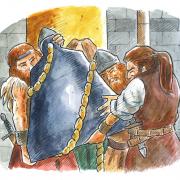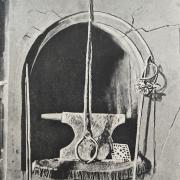Prostate cancer affects 40,000 men in the UK every year. Here James Hicks, urological surgeon at hospitals across Sussex tells us more about the condition
The prostate is found only in men. It is located below just the bladder and produces some of the fluid in semen. The prostate fluid protects sperm during intercourse. While the prostate often enlarges as men get older, for many men it doesn’t cause any problems.
However, men need to be aware of the health of their prostate as prostate cancer affects 40,000 men in the UK every year with 25 per cent of these cases being fatal. The disease is most common in older men with the majority of newly diagnosed men in their 70s to 80s.
It is rare for those under the age of 50 to develop this type of cancer but it can happen. There are strong familial links in prostate cancer with men being two and a half times more likely to get prostate cancer if their brother has prostate cancer. Also, those with Caribbean or African heritage are at greatest risk.
SymptomsThe symptoms of prostate cancer will be similar to the symptoms of prostate enlargement so it is best to be seen by a specialist who can diagnose you quickly. The most common symptoms are reduced urine flow, hesitancy at the start of urinating and a persistent dribble towards the end of urine flow.
The prostate blood test (PSA test)If you are suffering from any of these symptoms, the prostate can be assessed with a rectal examination, which will highlight if the prostate is enlarged , and a blood test. The higher the score of the PSA (Prostate Specific Antigen) then the higher the risk of cancer being present. This test is a good indicator but not always conclusive and further tests may be required.
There is no prostate cancer screening programme in the UK but all men are entitled to a PSA (Prostate Specific Antigen) blood test from their GP on request. Men of good health should be encouraged to have this test in their 50s as they have the most to gain from early detection.
DiagnosisMen who have abnormalities found in their examination or raised prostate specific antigens are offered a transrectal ultrasound guided prostate biopsy (TRUS biopsy). This biopsy takes pieces from the prostate which are inspected under a microscope for signs of cancer.
During the biopsy an ultrasound probe is inserted into the rectum recording the size and appearance of the prostate. Local anaesthetic may be injected around the prostate; a biopsy needle is then placed, under ultrasound guidance, into the prostate taking several pieces for histology investigation.
The histologist assesses the cell appearance, aggressiveness and disease volume. If cancer is confirmed CT, MRI or bone scans may be necessary. These look for the local extent of the disease, any lymph node enlargement and distant bony spread. Armed with this information the patient and surgeon can opt for the best individualised treatment. There are several choices of treatment including surgery, active surveillance, radiotherapy, brachytherapy, High Intensity Focused Ultrasound and hormonal manipulation.


























